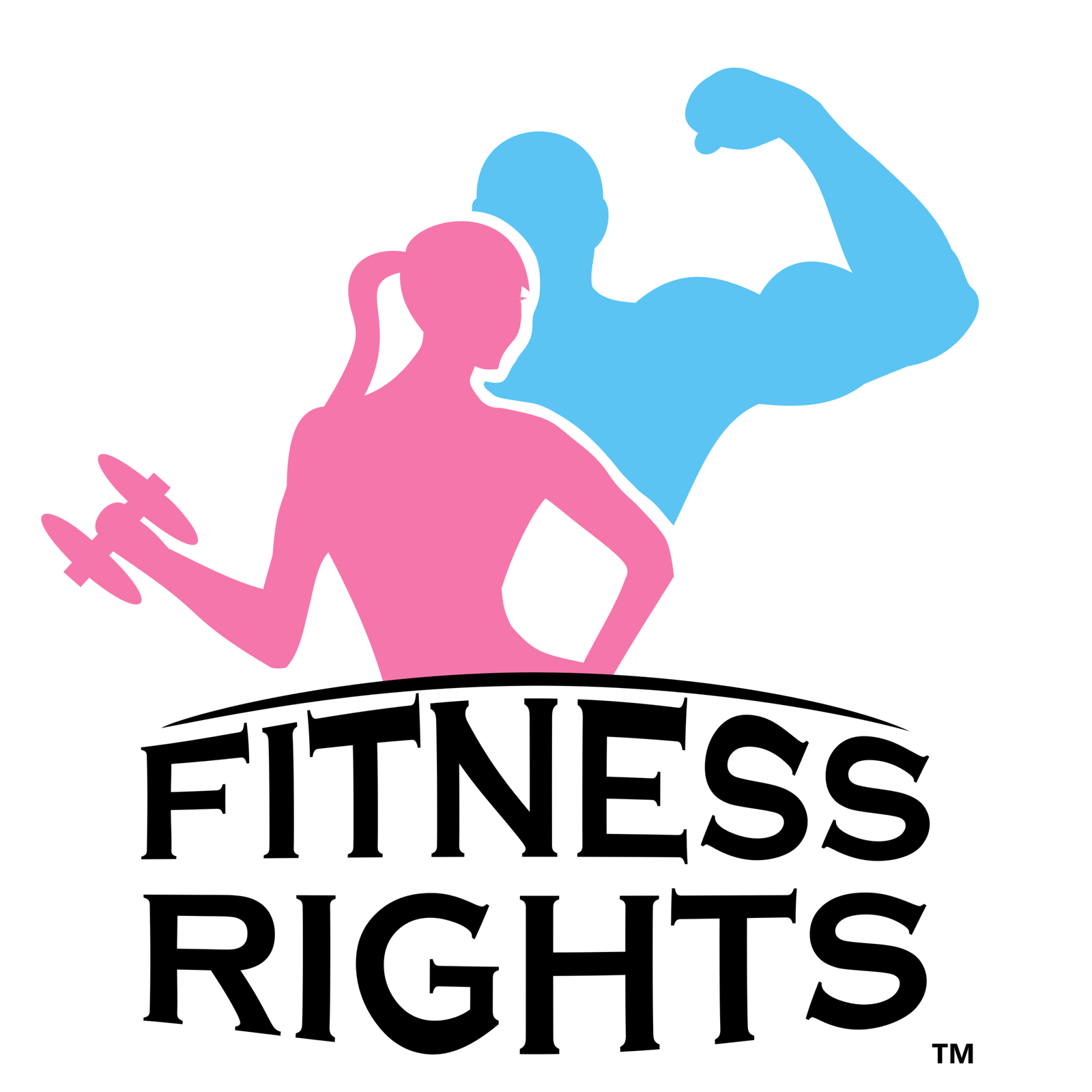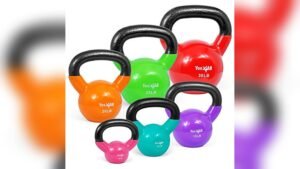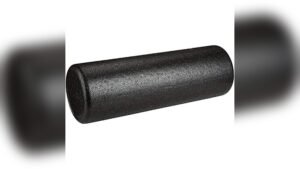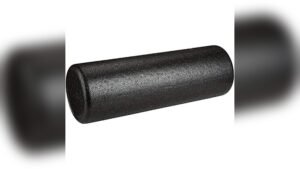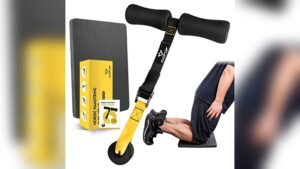Looking for a simple, effective way to boost your strength and tone your muscles right at home? Resistance band door exercises are exactly what you need.
By anchoring your resistance bands to a door, you unlock a world of workout possibilities that target your entire body. Whether you want to build muscle, improve your posture, or increase flexibility, these exercises fit easily into your daily routine.
Ready to learn how to use just a door and a band to transform your fitness? Keep reading to discover easy moves that deliver powerful results.
Table of Contents
ToggleBenefits Of Door Anchored Bands
Resistance band door exercises are popular for a reason. Door anchored bands offer many benefits that fit all fitness levels. These bands create a simple, effective workout at home or on the go. They help target different muscle groups with ease. Using a door anchor keeps bands stable and safe during exercise.
Versatility In Exercises
Door anchored bands allow many types of exercises. You can work your arms, legs, chest, and back. Adjust the band height for different angles and muscle focus. This flexibility makes workouts fresh and challenging. Beginners and advanced users both find useful options here.
Space-saving Workout Option
These bands need very little space to use. You can exercise in small rooms or apartments easily. No bulky machines or large equipment required. Just attach the anchor to a door and start moving. Perfect for people with limited workout areas.
Low Impact On Joints
Resistance bands provide smooth, controlled motion. This reduces stress on joints compared to heavy weights. It is ideal for people with joint pain or injuries. Gentle resistance helps improve strength without harsh impact. Safe and effective for all ages and fitness levels.

Credit: www.amazon.sg
Setting Up Your Door Anchor
Setting up your door anchor correctly is essential for effective resistance band exercises. A solid anchor ensures stability and safety during workouts. This section guides you through choosing the right door, placing the anchor properly, and following key safety steps.
Choosing The Right Door
Select a sturdy door that closes firmly. Hollow or weak doors may not hold the anchor well. Avoid doors with loose hinges or locks. The door should open away from the exercise side for better support. Check that the door frame is strong and secure.
Proper Anchor Placement
Place the door anchor at the top, side, or bottom of the door depending on the exercise. Ensure the anchor flap is on the opposite side of the door. Close the door fully and lock it if possible. Pull gently on the anchor to confirm it is secure before starting.
Safety Precautions
Inspect the anchor and resistance bands for damage before each use. Keep the door closed and locked during workouts to prevent accidents. Use a door that does not swing open easily. Avoid overstretching the bands beyond their limit. Stop immediately if you feel pain or discomfort.
Upper Body Moves
Resistance bands offer a simple way to strengthen your upper body at home. Using a door anchor, you can perform a variety of exercises. These moves target muscles in your back, chest, shoulders, and arms.
Each exercise uses the band’s tension to build strength and improve muscle tone. You can adjust resistance by changing band thickness or length. Here are some effective upper body exercises using a resistance band and door anchor.
Lat Pulldowns
Attach the band to the top of the door. Sit or kneel facing the door. Hold the band with both hands above your head. Pull the band down towards your chest slowly. This move works your back and shoulders well. Keep your core tight and back straight during the exercise.
Chest Press
Anchor the band behind the door at chest height. Stand facing away from the door. Hold the handles at chest level with elbows bent. Press your hands forward until arms are straight. Return slowly to the start position. This strengthens your chest and arms effectively.
Face Pulls
Place the band at head height on the door. Hold the handles with palms facing down. Pull the band towards your face, bending your elbows out. Squeeze your shoulder blades together at the end. This exercise improves posture and shoulder strength.
Seated Rows
Attach the band at the middle of the door. Sit facing the door with legs extended. Hold the band handles and pull them towards your waist. Keep your back straight and shoulders down. This move targets the upper back and biceps.
Tricep Extensions
Fix the band above the door. Stand facing away from the door. Hold the band handles behind your head with elbows bent. Extend your arms forward until straight. Return slowly to the start. This strengthens the triceps and tones your arms.
Lower Body Moves
Strengthening the lower body improves balance, power, and endurance. Resistance band door exercises offer a simple way to target these muscles at home. These moves activate your legs, glutes, and hips using controlled tension from the band. Small steps with resistance bands build strong foundations for everyday movement and workouts.
Squats With Resistance
Attach the resistance band to a door anchor near the floor. Stand facing the door, holding the band handles at shoulder height. Step back to create tension in the band. Lower your hips as if sitting in a chair. Keep your chest up and knees behind toes. Push through your heels to return to standing. This exercise tones your thighs and glutes effectively.
Standing Leg Press
Fasten the band at the bottom of the door. Stand facing away from the door with one foot in the band loop. Press your leg straight back, engaging your glutes and hamstrings. Hold briefly, then return slowly. Repeat with the other leg. This move strengthens hips and improves stability.
Glute Kickbacks
Attach the band to a low door anchor. Loop the band around one ankle. Stand tall and balance on the opposite leg. Kick the banded leg straight behind you without arching your back. Squeeze your glutes at the top. Lower the leg slowly. Switch sides after completing reps. Glute kickbacks sculpt and firm your backside.
Core Strengthening Moves
Core strengthening is vital for overall fitness and stability. Using resistance bands attached to a door offers a simple way to engage your core muscles. These moves improve balance, posture, and help protect your back. Each exercise targets different parts of your core for a well-rounded workout.
Woodchoppers
Woodchoppers work your obliques and abs. Anchor the resistance band at the top of the door. Stand sideways to the door, holding the band with both hands. Pull the band down and across your body in a chopping motion. Control the movement back to start. Repeat on both sides for balance.
Standing Twists
Standing twists activate your obliques and transverse abdominis. Fix the band at chest height on the door. Hold the band with both hands and stand with feet shoulder-width apart. Rotate your torso away from the door, keeping your hips stable. Slowly return to the center. Switch sides after reps.
Pallof Press
The Pallof press is excellent for core stability. Attach the band at chest level. Stand sideways to the door and hold the band close to your chest. Press the band straight out in front of you. Hold for a few seconds, then bring it back. Keep your core tight throughout the move.
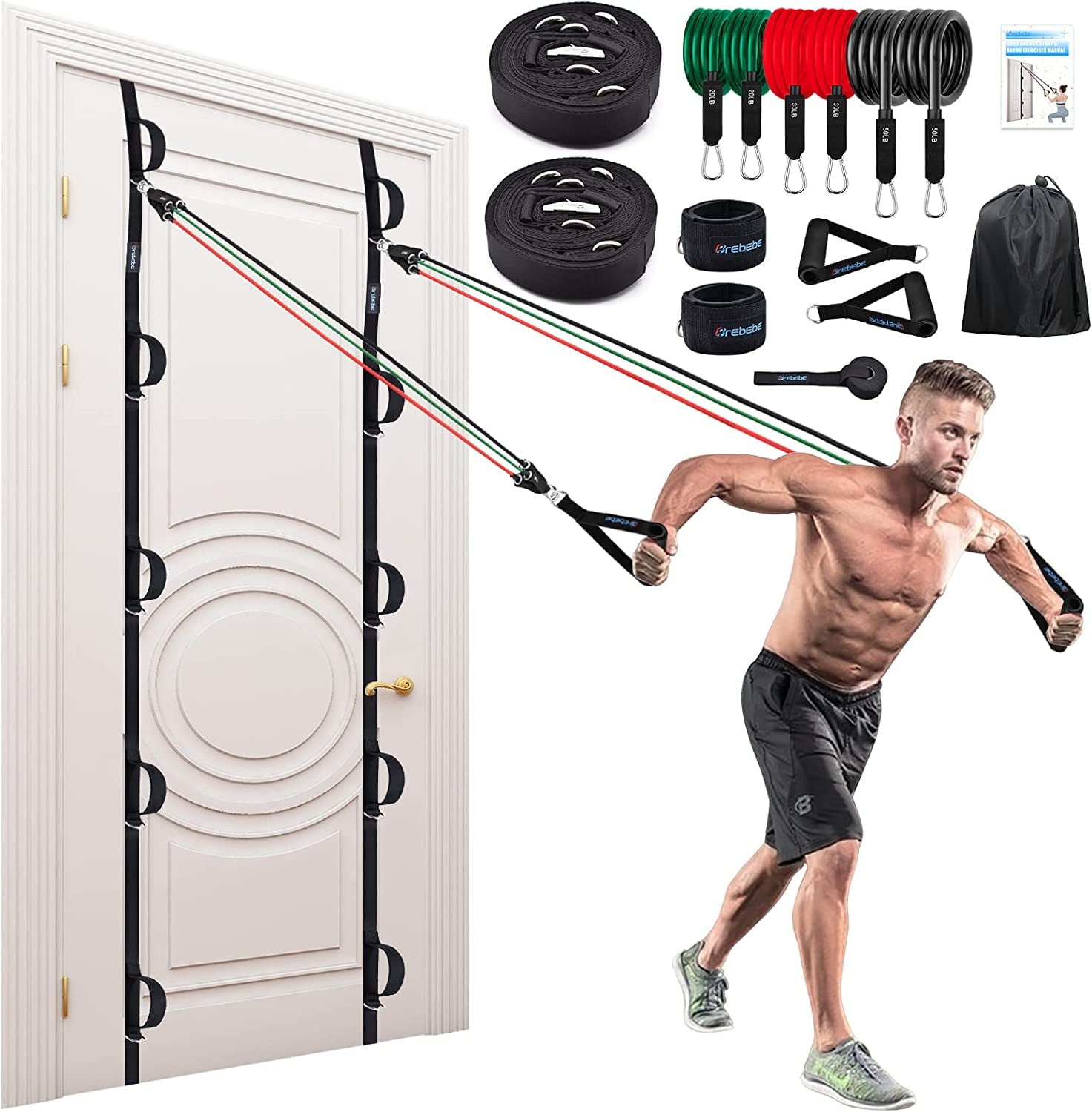
Credit: www.walmart.com
Combining Moves For Full-body Workouts
Combining moves with resistance band door exercises creates a powerful full-body workout. This method targets multiple muscle groups in one session. It improves strength, flexibility, and endurance. Using different exercises together keeps your routine fresh and exciting. You can work your upper body, lower body, and core in a single circuit. This approach saves time and maximizes results.
Circuit Training Ideas
Start with simple exercises like rows, squats, and chest presses. Perform each move for 30 seconds, then rest for 15 seconds. Repeat the circuit 3 to 4 times. Add moves like tricep kickbacks and shoulder presses to challenge yourself. Mix pulling and pushing exercises for balanced muscle work. Include core moves such as standing twists or woodchoppers. Keep the pace steady to raise your heart rate.
Beginner To Advanced Progressions
Beginners should start with lighter resistance bands and fewer reps. Focus on mastering form before increasing intensity. Increase resistance or add more sets as you improve. Advanced users can combine exercises without rest for a greater challenge. Try single-leg squats or slow pulldowns to engage more muscles. Use thicker bands to add resistance and build strength. Progress gradually to avoid injury and boost fitness effectively.
Tips To Maximize Your Workout
Maximizing your workout with resistance band door exercises improves strength and tone. Small changes boost results and reduce injury risk. Focus on key areas for better performance and faster progress.
Adjusting Band Tension
Choose the right tension level for your strength. Too much tension can cause strain and poor form. Too little tension reduces exercise benefits. Adjust by changing band length or using thicker bands. Test tension before starting each set.
Maintaining Proper Form
Keep your body stable and aligned during exercises. Engage your core to support your back. Avoid locking joints or using momentum to move the band. Slow, controlled movements target muscles better. Watch your posture in a mirror to check form.
Breathing Techniques
Breathe steadily to supply muscles with oxygen. Exhale during the effort phase of the exercise. Inhale as you return to the start position. Avoid holding your breath to prevent dizziness. Controlled breathing improves endurance and focus.
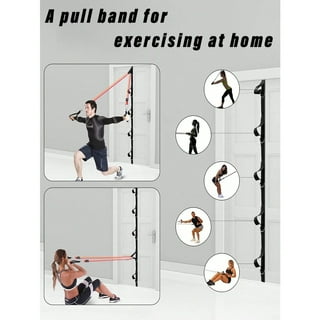
Credit: www.walmart.com
Common Mistakes To Avoid
Resistance band door exercises offer great benefits but can cause injury if done wrongly. Avoiding common mistakes helps you stay safe and get better results. Focus on proper setup and technique for effective workouts.
Incorrect Anchor Setup
Using the door anchor wrong is a frequent error. Place the anchor securely over the top or side of a closed door. Make sure the door closes tightly to hold the anchor in place. A loose anchor can slip and cause injury. Always test the anchor before starting exercises.
Overstretching Bands
Stretching the band too far can damage it or cause snapping. Bands have a limit to how much they stretch safely. Pull the band only as far as it feels comfortable and provides resistance. Avoid sudden or jerky movements to protect your muscles and joints. Replace bands if you see cracks or tears.
Ignoring Warm-up And Cool-down
Skipping warm-up and cool-down is a serious mistake. Warm-up prepares your muscles and joints for exercise. Cool-down helps reduce soreness and speeds recovery. Spend 5 to 10 minutes warming up with light movements before using resistance bands. Follow your workout with gentle stretches to relax muscles.
Frequently Asked Questions
What Are Resistance Band Door Exercises?
Resistance band door exercises use bands anchored to a door for strength training. They target multiple muscle groups and improve flexibility. These exercises are convenient for home workouts and require minimal equipment.
How Do I Set Up A Door Anchor For Bands?
Place the door anchor on the top, side, or bottom of a closed door. Ensure the door is securely shut to prevent slipping. Loop the resistance band through the anchor before starting exercises.
Which Muscles Do Door Resistance Band Workouts Target?
These workouts engage the back, chest, shoulders, arms, and legs. Resistance bands provide adjustable tension to tone and strengthen muscles effectively. They also improve core stability and flexibility.
Are Resistance Band Door Exercises Good For Beginners?
Yes, they are beginner-friendly and low-impact. Bands come in various resistance levels, allowing gradual strength building. They offer a safe, effective way to start strength training at home.
Conclusion
Resistance band door exercises fit easily into any routine. They build strength and improve flexibility. You can work many muscle groups at home. These exercises require little space and simple equipment. Consistency matters most for seeing results. Start slow and increase intensity over time.
Stay safe by securing the band properly. Enjoy the convenience and variety these exercises offer. Your body will thank you for the effort. Keep moving and feel the difference every day.
